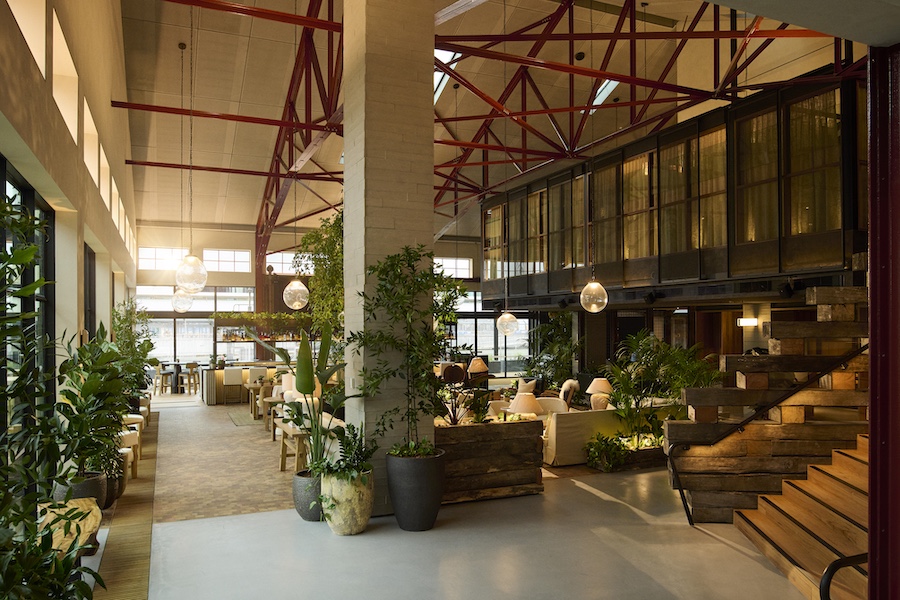For many, the environmental movement is about recycling, solar panels, and hybrid cars. Even we in the industry can get distracted by the technological whiz-bangery of the latest wind turbine, composite material, and waterless urinal. It’s easy to overlook what will be the most pervasive aspect of sustainability in the coming years: the green collar job market.
As chairman of USGBC-LA, I cross paths with all manner of professionals and environmentally attuned people. Few have grasped this impending wave of sustainable industry more firmly or with as much zeal as Larry Eisenberg, executive director of facilities planning and developer for Los Angeles Community College District. Eisenberg’s Build LACCD Green Jobs Program—propped up by $6 billion in voter-approved funds—is connecting LACCD students with companies that need workers trained in sustainability, and it benefits the community by providing services and jobs in sustainable and renewable industries.
Through Build LACCD, Eisenberg is, in essence, providing pro bono recruiting services to local businesses. LACCD screens candidates, provides training and offers ongoing support to ensure retention. The program further offers on-the-job training, reimbursements and workforce opportunity tax credits when companies hire through Build LACCD Green Jobs Program."We have adopted a workforce goal of 30 percent local and 6 percent disadvantaged workers within the LACCD Sustainable Building Program," Eisenberg says. "To date, we have attained and exceeded these goals. We are teaching students across the district the skills and knowledge needed to meet the green jobs needs of today and tomorrow."
On this issue, Eisenberg is a true visionary: considering the lingering recession, continued layoffs across the A/E/C industry, and interest in alternative and renewable sources of energy and construction materials and techniques, the green economy presents a light at the end of the tunnel.
Will we be ready? At Gensler, we encourage everyone to become LEED accredited, and we are up to 945 LEED APs across the firm’s 32 locations. According to one recently published listing of the top green design firms in the country, the numbers of accredited staff are increasing exponentially, which makes sense during times when employment is precarious across the industry. Cities, counties, states, and even the federal government are establishing new green building standards. Private clients increasingly are seeking sustainable design and operations, as well. It all equates to an emerging new discipline for architecture and interior design firms, which highlights social, economic, and environmental thought leadership.
LEED accreditation can be the secret to remaining employed or finding new jobs. President Obama embraces green jobs and has proposed spending more than $100 billion over 10 years promoting alternative, renewable energy sources, and conservation. According to one oft-quoted report by RAND Corp. and the University of Tennessee, if we were able to get 25 percent of our energy from renewable sources by 2025, we would create some 5 million green jobs. You can bet that companies in the A/E/C industry will be looking for workers with environmental experience.
And it’s not just architects and engineers who will need to be green-minded. Contractors, subcontractors, inspectors—all parts of the industry—are transforming to accommodate sustainability. Manufacturers of solar panels, wind turbines, and energy-saving appliances will all be vying for federal stimulus funding that will drive a green collar workforce.
The green jobs market is not solely a matter of necessity for the unemployed. According to a study from the American Solar Energy Society, an increasing number of people are changing careers in an effort to apply their skills to professional pursuits more aligned with their passion for making a difference. The study forecasted that the current 8.5 million U.S. green jobs could grow fivefold by 2030.
Two years ago my friend Christian was a salesman for a company that provided building access security card systems. A smart guy in his late 20s, Christian saw green technology as an emerging business opportunity, one where he could apply his sales skills, entrepreneurial spirit, and a passion for a greener Southern California. He started working for Online Clean Energy, a design/build contractor specializing in commercial solar arrays. Today, he satisfies a lifelong passion for the environment and the thrill of the sales pitch every day. "Working doesn’t feel like work because I’m doing something I love," he says.
There will be plenty more stories like Christian’s in the near future. He gets five calls a month from recruiters looking for salespeople experienced with sustainable and renewable products. He said the job market is expanding apace, but to take advantage you must be educated and experienced. We all should be lucky enough to find something we treasure that we can turn into a career. If nothing else, we should be smart enough to see that a new industrial revolution is upon us.
Peter Barsuk of Gensler is chairman of the Los Angeles chapter of the USGBC.
—Nielsen Business Media


